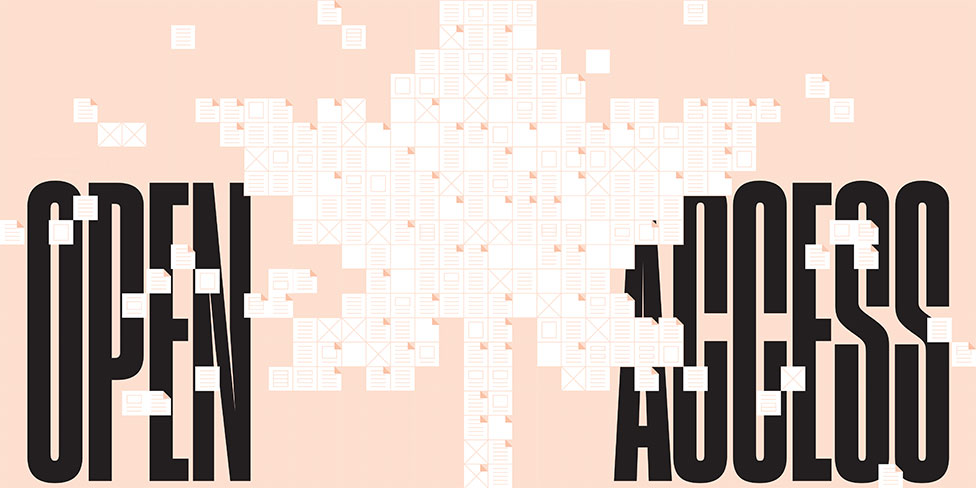Beware! Academics are getting reeled in by scam journals
The number of predatory publishers is skyrocketing – and they’re eager to pounce on unsuspecting scholars.

Editor’s note, Jan. 18, 2017: Jeffrey Beall, the University of Colorado Denver librarian behind Beall’s List of “potential, possible or probable” predatory journals, has removed all information from his site. Retraction Watch reports that it received a statement from the University of Colorado Denver that Mr. Beall “has decided to no longer maintain or publish his research or blog on open access journals and ‘predatory publishers.’” Lacey Earle, vice-president of business development for Cabell’s International, a publishing services company, said on Twitter that Mr. Beall “was forced to shut down [the] blog due to threats and politics.” As well, publisher MDPI disputes some of the claims in the article. See their response here.
This past year, when an undergraduate biology student at the University of the Fraser Valley approached dean of science Lucy Lee for $2,000 to publish a paper in an academic journal, Dr. Lee had immediate concerns about the request. She’d had a bad experience with the journal in question, the International Journal of Environmental Research and Public Health, while doing a review for the publication. She discovered a lack of rigour in some of the journal’s articles, was alarmed at its many retractions and corrections, and had concerns with the journal’s practice of publishing an “acknowledgement” issue with a very long list of reviewers to make it look credible.
The publisher, Multidisciplinary Digital Publishing Institute (MDPI), churns out nearly 160 scholarly journals a year, many of them of mediocre quality, according to Jeffrey Beall, an associate professor and librarian at the University of Colorado Denver, and one of the world’s leading experts on what he calls “predatory” open access publishing. Each week, MDPI and other questionable publishers hound Dr. Lee by email, asking her to review submissions that she considers shoddy. Mr. Beall has called this particular environmental publication a “pretend journal.” So when Dr. Lee next saw the biology student, she alerted her to the potential problems and redirected her to more credible scholarly publications, such as FACETS, a Canadian open access journal.
Predatory and mediocre journals are based on the model of open access publishing in which authors pay fees to have their work published online. However, unlike legitimate journals, they bombard academics with spam emails, accept almost all submissions and overstate the rigour of their peer-review processes. They also often conveniently neglect to mention publication fees until late in the process.
In other cases, authors are complicit in the scam, publishing numerous articles in these questionable journals to earn quick and easy academic credit at their institutions. “There are some predatory journals that specialize in that, charging only $200 or $300 for publication,” says Mr. Beall. This compares to fees of $1,500 or more for most of the large, reputable open access publishers. “If you need academic credit, the market provides a solution,” he says, adding: “Universities are particularly susceptible to these ethical breaches and predatory practices.”

The world of scholarly publishing is in serious trouble. The number of predatory journals has skyrocketed in the past three to four years, leading to a tidal wave of poor-quality research being published. Beall’s List, the popular blacklist website compiled by Mr. Beall, contains more than 1,200 publications and 1,000 publishers that he calls potentially predatory. Five years ago, there were only 18 publishers on the list.
In 2014 alone, publishers launched approximately 1,000 new journals. Distinguishing the unethical, pretend journals from the real ones is becoming increasingly difficult as scams get more sophisticated and publication standards fall. Bad journals range in quality from mediocre to outright frauds, and researchers are advised to stay away from them.
It hasn’t always been this bad. Legitimate open access publishers, such as the Public Library of Science (PLOS) and BioMed Central, began about 20 years ago as the internet expanded. They contained few restrictions on access to scholarly work, in contrast to traditional models in which subscribers, mainly libraries, pay fees for access to journal content. Thanks to PLOS and other big, credible publishers, open access models changed the culture of scholarly publishing for the better, making research more accessible. But open access models also opened the doors to scam artists and mediocrity.
“The barriers to launching a new operation are few and low,” Mr. Beall says. “All you need is a website and the money starts rolling in. People are copying the model from friends and uncles, because they see how easily they’re making profits.” Predatory journals are run less like multinational corporations and more like syndicates, working independently of one another but using similar models, resources and methods.
it is considered more prestigious to publish in North American journals
What’s more, many predatory journals “want to use Canada’s brand value,” says Mr. Beall. Most of the world’s scholars are based in Asia, he explains, but it is considered more prestigious for them to publish in North American journals than those based in India or China, for example. “People are starting predatory journal operations for those overseas scholars, and running the journals out of their houses in suburbs of Toronto and places like that.” For instance, a group from Pakistan runs scientific publisher ScienceVier – a riff on the name of the well-known, reputable publisher Elsevier – out of a Hamilton, Ontario, apartment building.
Savvy deans such as Dr. Lee at UFV are trying to raise awareness about these issues. “Some students and faculty … are quite gullible,” Dr. Lee says. In her role as an executive on the Canadian Council of Deans of Science, she invited Mr. Beall to speak at the council’s annual meeting in 2016. One of the themes of the meeting, she says, was “the things that keep deans awake at night.”
When Mr. Beall discovers a predatory publisher, he doesn’t pull his punches. Titles of his blog posts denouncing predatory journals and publishers include, “More Rubbish from Hyderabad: Peertechz” and “>OMICS International Totally Sucks.” Mr. Beall classifies both Peertechz and OMICS as predatory publishers. “The warnings need to be stark to alert people,” he says.
The deans’ council was grateful for his research and candid conclusions, Dr. Lee says. “Some deans were unaware of the recent predatory ways in which these publishers are tricking academics,” she says. “It was eye-opening. When we hire new faculty, we have to be very careful to look at their CVs in detail. Some applicants list 50-plus publications and we have to comb through each one to ensure it’s credible.”
“This is a problem for all scholars”
Canada’s francophone academics are not immune to the issue, even though most of these predatory journals publish in English. “This is a problem for all scholars, irrespective of language,” says Vincent Larivière, an expert on scholarly publishing who holds the Canada Research Chair on the Transformations of Scholarly Communication at Université de Montréal.
Dr. Larivière notes that, in the natural and medical sciences, francophone scholars mostly publish in English, since topics are international in scope. However, in the social sciences and humanities – given that history, culture and society are usually closely linked to language – francophones are more likely to publish in French.
“But, the trend is changing because of pressures to be more international and publish in English,” says Dr. Larivière. “In this context, I think it is quite crucial that francophone researchers also become aware of this issue of predatory journals. It might be even more crucial for them, as English-language journals might not be their natural publication venues.”
Eduardo Franco, the James McGill Professor in the departments of oncology, and epidemiology and biostatistics, at McGill University, says he sees many junior faculty members getting duped. “That is a bad trend,” he says. “Older faculty members know the credible journals, because there are only a few great journals in each discipline.”
In his role as chair of McGill’s department of oncology, Dr. Franco oversees academic promotion, which includes reading every CV submitted to the department. In 2014, he wrote a warning letter to faculty about publishing in predatory journals. “Some have also accepted roles as editors or editorial board members of these journals,” he wrote. “If only they actually knew what passes for science in these journals … they would immediately disallow their association with them.”

Dr. Franco has had his own run-ins with predatory publishers. OMICS once used his name for a series of dental conferences that had nothing to do with him and even “had the audacity to hijack the name of one of the journals I edit, Preventive Medicine,” he says. Preventive Medicine, founded in 1972, is published by Elsevier; the similarly titled Journal of Preventive Medicine is published by Insight Medical Publishing, which is owned by OMICS.
This recent hijacking trend is particularly disturbing, says Dr. Franco, because the fakes piggyback on real brands and confuse even vigilant academics. Plus, shutting down these sites is nearly impossible; when someone convinces authorities to shut one down, another site quickly replaces it. OMICS is one of the largest scholarly publishers in the world, running more than 700 journals, most of them of dubious quality.
It gets worse, Dr. Franco says: OMICS is now buying legitimate publishers. At the end of September, the India-based company made news in Canada after Rose Simpson, the former managing editor of the Canadian Journal of General Internal Medicine and several other scholarly journals, blew the whistle on some of its purchases. In January 2016, she’d discovered that OMICS was buying Andrew John Publishing Inc. of Dundas, Ontario, which owned more than a dozen legitimate publications. She had been working for AJPI, but was let go this past July. The company’s former publisher, John Birky, told her that OMICS had also bought the Pulsus Group, a legitimate publisher that managed the Canadian Journal of Respiratory Therapy and more than 30 other credible publications.
“my spidey senses began tingling”
Ms. Simpson, who’s been an editor and writer for 40 years, was surprised at the takeovers. “During the transition at AJPI, the publisher never used the name OMICS and only told his clients that there were new partners,” she says. “Even after the company was sold, very few people knew about OMICS.”
She went to the OMICS website and “my spidey senses began tingling,” she says. “I discovered spelling and grammatical errors” – mistakes that any high school student could have fixed.
Still, not knowing much about OMICS, she agreed to help in the transition at the Pulsus Group. An OMICS representative in Dubai offered her a contract position. “Immediately after the Dubai call, an OMICS rep contacted everyone at Pulsus and introduced me as the new person who would solve everyone’s problems,” Ms. Simpson says. Then all hell broke loose.
“I started getting emails from people at the journals saying, ‘This is a disaster,’” she says. The former publisher of Pulsus, who she suspects was duped by OMICS, sent a note to her saying that editors at some of the Pulsus journals were vilifying him. Serious inaccuracies and false claims began popping up on the Pulsus website, including old contact information, references to a journal that OMICS hadn’t acquired and references to business segments that OMICS didn’t own. One editor said he Googled OMICS and discovered on a Wikipedia page that the U.S. Federal Trade Commission had filed complaint against the company a month earlier.
“The editor asked me if this was true,” says Ms. Simpson. She checked and discovered to her horror that it was. This past August, the FTC had filed a case in the U.S. against OMICS for deceptive publishing, stating that “consumers have suffered and will continue to suffer substantial injury” because of OMICS’ violations. The FTC noted that OMICS made false statements that some of its journals were included in PubMed and MEDLINE, two reputable academic-journal indexing services. In addition, the FTC claimed that OMICS was holding on to authors’ submissions until the authors paid publication fees, essentially kidnapping their work. Even after receiving requests to withdraw articles, OMICS published them in spite of authors’ objections – and continued to ask for payments.
“I thought, ‘Oh my god’,” Ms. Simpson says. “I didn’t want to be associated with anyone like that.” She quit not long after the Dubai call and began sending emails to the AJPI journals where she’d worked. “Everyone just freaked out,” she says. “None of the medical societies for whom I worked knew that OMICS had bought AJPI or Pulsus.” After learning about the FTC case, a few editors at the bought-out Canadian journals that were indexed with PubMed feared they would lose their status because of OMICS.
In response to the FTC lawsuit, OMICS lawyers submitted a rebuttal and asked that the case be dismissed. OMICS owner, Srinubabu Gedela, also clarified that OMICS doesn’t control the journals, just their publishing contracts.
Nevertheless, one by one, the journals formerly under AJPI and Pulsus are now trying to break their contracts with OMICS and turn to more reputable publishers. This past September, the Toronto Star reported that six of the journals, including the Canadian Journal of General Internal Medicine and the Canadian Journal of Optometry, terminated their publishing contracts with OMICS. In other cases, editors-in-chief are resigning. Ten other journals contacted by the Star didn’t respond to emails.
“The explosion in open access predatory publishing has increased the noise in the scientific world”
“Predatory journals are contaminating the world of science,” says McGill’s Dr. Franco. “I have only contempt for publishers like OMICS. The explosion in open access predatory publishing has increased the noise in the scientific world. It’s become more difficult to hear real signals – to hear about real, relevant scientific discoveries.”
In an effort to alert academics, Mr. Beall updated his Beall’s List to include both AJPI and Pulsus as possible predators and wrote about the panic among staff and editors at many Canadian medical journals. “OMICS International is on a mission to take over all of scholarly publishing,” Mr. Beall wrote, saying the company is on a buying spree around the world. “It is purchasing journals and publishers and incorporating them into its evil empire. Its strategy is to saturate scholarly publishing with its low-quality and poorly managed journals, aiming to squeeze out and acquire legitimate publishers.”
Complicating the situation, OMICS and other predatory journals use fake impact-factor companies to make themselves appear more legitimate than they really are. The FTC mentioned this in its case against the company. Legitimate firms count article citations and other factors to measure a journal’s influence or impact. “There’s one legitimate impact-factor supplier, and it’s Thomson Reuters,” says Mr. Beall. “Most predatory journals have an impact-factor number,” he adds, but “they either lie or hire a company to contrive one, and they use the number on their websites and in emails to make it look like they’re authentic.”
Academics are also increasingly facing a deluge of invitations to fake or low-quality conferences, sometimes run by the same unscrupulous individuals who run fake or mediocre journals. “There are a lot of conferences that aren’t really scientific but make money for somebody,” UFV’s Dr. Lee says. Such conference organizers harvest emails from university websites and send requests to academics, some of whom, unfortunately, use the opportunity to take vacations. “I regularly get invitations to attend these internationally, and they’re email scams,” she says.
The consequences of all this can be painful for unsuspecting academics. Dr. Franco says he hasn’t seen careers ended, but he warns that by publishing your work in a predatory or mediocre journal, you’ve burned that research. “You can’t republish the same research, and the article in the predatory journal could stay on the internet forever,” he says, risking your reputation. Given the number and sophistication of predatory and mediocre journals – and the lack of oversight and policing in the industry – perhaps the most reasonable advice is to assume that all new journals are suspect, unless the journal’s criteria and content prove otherwise.
How to identify mediocre or predatory academic journals and publishers
- Spend a few minutes searching on the following websites for the publisher or journal in question: Beall’s List (scholarlyoa.com), which contains blacklisted publishers and journals, as well as so-called hijacked journals; and PubPeer, a popular, anonymous database that allows you to search for misconduct among individual researchers.
- Take the time to read articles in the journal that you’re interested in and research the journal itself. There should be absolutely no obvious spelling or grammar mistakes in the journal. Publishers’ websites should be easy to navigate, transparent in terms of contact names and methods, and shouldn’t crash or suffer from ongoing technical problems. Also, legitimate open access journals are always transparent and clear about their peer-review processes and author fees. A short peer-review process and sudden request for fees are signs of a predatory journal.
- Cross-industry coalitions have started ventures to protect against deceptive journals, and universities are doing much more with committees and codes to stop deceptive practices compared to three or four years ago. For basic advice, refer to the site thinkchecksubmit.org (although a default attitude of “think, check, don’t submit” might serve you better).
- Search Journal Citation Reports, published by Thomson Reuters, to confirm claimed impact factors.
- Avoid using journal “whitelists” because such lists and indexes weren’t created for the purpose of conferring legitimacy. For instance, the Directory of Open Access Journals and the Thomson Reuters Master Journal List (which provides a list of journals appearing in at least one of 24 indexes) are legitimate operations, but their lists contain many predatory journals. Ditto for Scopus, Science Citation Index and other academic lists, citation databases and indexes.
- Don’t be fooled by a journal’s association with legitimate businesses, codes and committees. The scholarly publishing industry is doing a poor job of policing itself and legitimate companies, such as firms that sell software and agencies that distribute ISSN numbers, offer services and licenses to almost anyone, including predatory publishers. For example, although the Committee on Publication Ethics, or COPE, contains more than 10,000 members worldwide and provides advice on how to handle cases of research and publication misconduct, many of its members are from predatory journals.












Post a comment
University Affairs moderates all comments according to the following guidelines. If approved, comments generally appear within one business day. We may republish particularly insightful remarks in our print edition or elsewhere.
36 Comments
Wow …. why wasn’t an article such as this published years ago?!
I know that I am old as well as old-fashioned, but to me all open-access journals have the air of the vanity press industry. I know, I know, the reputable ones are peer-reviewed, but one always wonders the extent to which an author fee influences the final decision ….
I have more respect for those publishers who give you an option of open-access vs traditional. I always choose traditional (even when I had a research grant before retirement), and guess what: after 6 months the articles become essentially open access …..
Most important, the vast majority of people who want to read the academic literature have access to the library of an academic institution, where they can access articles without a fee …. so can someone enlighten me as to what advantage there is for an author to dish out the better part of $2000 from a modest research grant to publish an article?
You write: “all open-access journals have the air of the vanity press industry”. True, prejudices like “OA journals are bad” or “OA journals that charge authors article processing charges (APCs) are not serious at peer-review” make life simpler, but they are no substitute to the actual assessment of journal quality. It’s like saying “Elsevier journals are good”, “Elsevier journals are bad” or “Elsevier must certainly cut on peer review in order to maintain their extremely high profitability” (you may put any major publisher name instead).There are both good and not-so-good Elsevier journals, as there are good and not-so-good OA journals. Even extremely bad ones, in both cases.
A few reminders here:
– Many OA journals don’t charge APCs (it’s true especially in social sciences and humanities).
– Some OA journals with APCs do have a very low acceptance rate (PLOS Medicine, for instance).
– All reputable publishers now have a number of OA titles. Some examples: Nature Publishing Group (now part of Springer), 36 journals; Oxford University Press, 27 journals; even Elsevier, 263 journals. Again, not all those will be of the same quality.
You also write: “the vast majority of people who want to read the academic literature have access to the library of an academic institution”. Well, I haven’t seen any peer-reviewed study on this subject (surely not easy to investigate), but there is plenty of (anecdotal) evidence of the contrary. For instance, it seems that 40% of Pubmed Central (an OA aggregator) users are not researchers, but “citizens” (see http://bit.ly/2jfNfTr). And, although it doesn’t seem to apply tou your situation, even researchers don’t have access to all the papers they need. I certainly didn’t, even as a professor in a decent university, because I often needed articles falling outside of the main research topics of my institution. True, I could have taken the bus to a major university library or waited a few days for an inter-library loan, but it’s nowhere near what I call access in the 21st century.
Well put, Marc. Thanks for commenting.
“Having the air of vanity press”: I don’t mean by that that they are vanity press because, as you say, there’s a mixed bag. You named at least several highly reputable, OA excellent journals. I once asked one of the Nature journals I was considering submitting to whether acceptance of a submitted MS was independent of ability to pay the fee. I seem to recall that if a paper is accepted, one must pay the fee; so I withdrew the submission.
I wasn’t aware that some OA journals don’t charge a fee to the authors. I wonder where they get their financial resources from …. Anybody know?? The traditional journals that give one the option of OA require a fee, but if you don’t sign up for that option, the paper will be published, just not available freely until ~6 months later. Personally, I couldn’t care less!
In the social sciences there are a number of Canadian journals that use the Open Journal System (OJS). Costs are low. In the journal I edit, we receive a tiny stipend from our professional association and apply for grants and faculty graduate research stipends to help with editorial assistance. Co-editors are all volunteers (getting our ‘credit’ in our academic recognition of this). Currently, SSHRC now requires researchers to publish in open access forms, to address their commitment to making research public. That said, in the journal I work with, we are receiving increasing numbers of submissions where applicants have clearly have had prior work with the predatory journals — for example, wondering why the peer reviews haven’t been completed in a few weeks’ time.
There are many, many OA journals that do not charge author fees. Where do they get the money? Well, from a number of sources. Some journals are financed by scholarly societies, who do, of course, charge membership fees to their members, but one benefit of membership is that their journal is free to all, and the publishing acceptances are completely divorced from any fees. In fact, this model is fairly common. One platform with which I am familiar is financed by a combination of a large ongoing government grant plus a single large annual “subscription” from a major reseach university; that platform publishes about a dozen journals. There are many other models as well. I have been studying Open Access for many years – I’m a dean at a large research library (not in Canada), and I have worked at some of the most highly respected institutions in the world, including Harvard – though I’d prefer to remain semi-anonymous for this reply, just because I don’t have time to deal with the gazillion arguments I’ll get. Open Access and predatory or vanity publishing are not synonymous. There is definitely cross-over, but tarring most OA journals with this brush does a major disservice to the many parties who are trying to enhance access to good, scholarly, reputable information.
This goes well beyond predatory journals: predatory conferences are now also the norm. Guess who is involved here again? OMICS…I`m sure that many of my colleagues are bombarded daily with these fake conference invitations…
Hi Marc Dubé. It’s not only OMICS. There are many others involved.
This is a sad state of affairs. In 1998 I published several micro papers in the the original MDPI (Molecular Diversity Preservation International) journal Molecules. This had a Molbank section where you could upload one molecule syntheses as fully OA papers, no cost to authors, no cost to read them. They were indexed by Scifinder so I found it useful to publish several left over compounds from my phd that never made it into the thesis, but were fully characterised, in the hope that it might someday be of use to someone. One even ended up as a citation in Wikipedia. Sadly it later became compulsory to donate a sample of the molecule if you wished to publish, which became prohibive if you had to deal with customs, OHS etc. so it withered, and MDPI dissolved. Out of the the ashes this high cost predatory publisher has emerged. It started out promisingly but as has become commonplace, financial pressures turned a great old idea into a harsh reality. All publishing models cost money, it’s just where the most burden lies that changes.
Ah, nice, the 378th article about OMICS journals & predatory publishing with all the details that any academic worth their title should know by know…but I wish these articles would also spell out a more blunt truth: If you go to any journal page and a substantial amount of articles are published by academics on the global periphery, very often based at universities you didn’t even know existed, chances are that this is a predatory journal. These journals thrive to a large extent not because ‘unsuspecting’, primarily OECD country-based academics submit articles, but because of a growing academic periphery with many academics in large developing and transitioning countries publishing in such journals.
We can/should talk about global inequalities, better education and research funding for academics and higher education systems on said periphery, but in the meantime you can pretty much spot a predatory journal the moment you access their ‘.com’ website…
Hi teekay. You’re right that you can figure out a predatory journal using its website, mainly by noting the basic errors, but it’s not true that an indicator is ‘a substantial amount of articles published by academics on the global periphery.’ The global periphery, however you define it, has nothing to do with it, other than what I wrote in my article.
An easy solution is to transform academic culture so that university libraries become the principal publishers of academic research. Accredited universities already have (and are guaranteed to retain) the branding needed to give confidence that anything they publish will be free from these kinds of deceptive and predatory practices. http://www.musingsone.com/2014/08/why-are-university-researchers-still.html
I’ve been covering this issue for several years as a reporter at the Ottawa Citizen. (In fact, that’s one of my articles dangling on the fishhook in UA’s cover art, a meaningless test submission that a journal actually published.) One thing I have never been able to pin down is how much Canadian grant money goes into pieces published in thoroughly fake journals — which don’t have actually readerships, and which often disappear without a trace after a few months. Would anyone have ideas on how to trace this? I have tried asking individuals who publish in these journals but they tend not to want to talk about it. I’m at [email protected].
Hi Tom. I heard about your article. Incredible journalism! I don’t think you’ll find an aggregate number regarding grants and journals, because Beall seems to be the only one who’s tracking the journals (until two days ago). I can’t imagine that the large granting agencies in Canada have a list of mediocre or predatory journals other than the ones they catch for academic misconduct (and those lists are very short). However, one (tedious) way to find a trend is to look at the most egregious academics/journals and make a list of granting agencies you see listed at the bottom of each article or listed on a website related to the article. I guess that’s obvious.
Beall’s list has been hacked (confirming Beall’s diagnosis in the case of the “publishers” that paid the hackers. I may be wrong, but I think that on balance the list does more good than harm. I hope it will be recovered), restored, and protected with better security.
Thank you so much for this article. Although I was aware that many new journals were created almost every day, I tough it was the result of some sort of liberalization of publishing. I was completely unaware of the predatory practices.
I have a question though: I accessed Beall’s list a few days ago but now his website seems to be closed (no content on it anymore). Would you have a clue about what’s going on ?
It appears Beall’s list may have been hacked. See Stevan Harnad’s commnent of Jan 15.
Léo Charbonneau, editor, University Affairs
Thank you very much. I saw the comment you mentioned just after posting mine!
A few comments on the respective relevance of “black” and “white” lists.
While most praise Jeffrey Beall for having single-handedly brought the world’s attention to this issue, there has been much criticism of his approach. Although Beall makes his (long) list of criteria public, the whole procedure of adding / deleting journals in his list is not very transparent. It’s often hard to understand or assess in specific cases the link between Beall’s criteria and his decision, which he makes alone. True, there is an “appeal committee” available to those who have been eliminated, but the names of its members are not revealed.
More fundamentally, it’s the very idea of a black list that can be questioned. One of the main arguments is that it’s a binary decision: a publisher is in the list or is not. In addition, when a publisher is added, all its journals are automatically considered “predatory”. Although Beall speaks of “potential, possible, or probable” predatory publishers, this distinction isn’t made in the actual list, or in the discussions involving it. However, one finds in the list wide spectrum of realities ranging from outright fraud or deception to simply low-quality publishing (or peer review). It’s useful to remind that the latter is also found among subscription journals which, by definition, are excluded from Beall’s evaluation.
As to whitelists, I must say that I know nothing about the Thompson Reuters Master Journal List. But I do know a lot about DOAJ, in part as associate editor of an OA journal that, like all previously included journals, had to go through their (still ongoing) reapplication process. As a result of the much more stringent criteria and assessment process, thousands of journals were removed in the last two years, while only a third of the new applications were accepted (http://bit.ly/2inYlSg).
Even before, the overlap between Beall’s and DOAJ’s lists was not large: two years ago, about 10 % of DAOJ journals were also in Beall’s list, according to a comparison I made while reviewing a paper on this issue. I redid the check today, and even if Beall’s lists now contain many more entries (the number of entries in the journal list has more than doubled), the number of overlapping journals is less than a third than before. And that with the “cleanup” of DOAJ’s list not yet over.
It is worth noting that the site thinkchecksubmit.org (suggested in point #3) does recommend using DOAJ, while saying nothing about Beall’s lists.
So my advice would be: lists are useful (and DOAJ’s more than Beall’s) as a starting point, but you should always take the time, in order to make an informed choice of publishing venue, to examine some journal issues/papers and discuss with colleagues who have recently published in your field and, hopefully, are not prejudiced against open access.
Finally, to anyone interested in exploring this issue in depth, I strongly recommend reading Walt Crawford’s invaluable work (http://citesandinsights.info).
I would like to respond to the concerns that were raised specifically about the International Journal of Environmental Research and Public Health, and its publisher MDPI in general, in the article “Beware! Academics are getting reeled in by scam journals” by Alex Gillis (February 2017). The article questions the quality and integrity of the journal. I would like to provide you with additional information in the hope that this may alter your assessment of it.
1. In 2016, the journal published 1,090 papers, with four corrections and one retraction. Since its inception in 2004, there have been three retractions. We do not consider this “many.”
2. The article mentions a lack of rigour in the journal’s articles: MDPI operates a rigorous editorial and peer-review process. The journal rejection rate in 2016 was 62.3 percent. The Impact Factor is 2.035 and the journal ranks in Q2 in Journal Citation Reports. The editorial process is strictly controlled by the editor-in-chief, Professor Paul Tchounwou, and the editorial board. We work exceptionally hard to ensure that the journal upholds its quality standards.
3. The article processing charge for the journal is 1,600 Swiss francs per paper; at today’s exchange rate, that equates to approximately $1,590 USD, not $2,000 USD as mentioned in the article.
We also find this statement troubling and unfounded: “It hasn’t always been this bad. Legitimate open access publishers, such as the Public Library of Science (PLOS) and BioMed Central, began about 20 years ago as the internet expanded.” Please note that MDPI published its first open access journal, Molecules, in 1996 (before the term open access was even defined). MDPI was removed from Beall’s list on appeal, prior to its closure.
Unfortunately, there are indeed some “publishers” out there with poor practices, and those practices are not helpful to the reputation of legitimate publishers who adhere to industry standards and ethical publication policies. We welcome the efforts of Jeffrey Beall and also appreciate critical opinions about open access. However, we are disappointed that some of the facts in the article were not corroborated with us.
Unai Vicario
Co-managing editor of IJERPH, Barcelona, Spain.
We create the content yet we pay for the “honour” of Reed-Elsevier, Springer, Wiley-Blackwell, Taylor & Francis, etc. to publish our work. Not to mention they are buying up all the society journals and everything else they can get their hands on, and their profit margins are absurdly high.
Predatory journals are clearly real, but the sceptic in me thinks the Big Publishers also want to keep us away from smaller, OA, independent journals – at least until they buy them. “Go with a brand you can trust”, essentially.
As a side, one of the most popular journals in my field has an official IF of 15 or so. It is completely inflated and manipulated, thanks to an IF-obsessed editor who is trying to outcompete an editor or another journal, among other things. The peer-review process of this journal is also a bit sketchy, not to mention the whole thing reeks of nepotism. But it’s one of the “best” journals to publish in!
Thanks for this great article! This is a topic I’ve followed for some years and I’ve warned several colleagues about fake journals, conferences, editors. They also pop up at scientific conferences sometimes, trying to convince people to edit books. I’ve found articles by respectable colleagues (even faculty deans) or by industry scientists in such journals, . One of my students got fopped by the VDM editors, a hydra with many names (https://en.wikipedia.org/wiki/OmniScriptum) that spams thousands of recent PhDs trying to convince them to publish their thesis with them and sells them for premium prices on Amazon and other sites. It’s a difficult problem for universities to get a handle on and researchers are not aware enough. A big problem for free open-access publishing is financing. As an editing board member of a free open-access journal, part of the revues.org free open access platform,I know how difficult it is to run such a journal, even though most of our work is volunteer except for an editor and co-editor with part-time salaries. Funding bodies are not set up to finance journals, even though many funding agencies pay open access fees for authors. In June 2017 alone, RCUK paid £8,064,800.45 (http://www.rcuk.ac.uk/documents/oadocs/june2017oapayments-pdf/) in open access fees, which would be enough to entirely fund well over 150 free open access scientific journals (web based) for a year. Although well meant in the interest of the accessibility of science, the RCUK policy encourages dubious publishing practices such as these explained in the article, and also encourages reputable publishers to offer gold standard open-access, while still collecting subscription from libraries (so-called double dipping), which is an unacceptable profit making on freely provided usually tax-payer funded science.
If you have genuine problems picking out a predatory journal, perhaps a career revolving around critical thinking and investigation isn’t for you!
Nice article shedding light on significant issue. I have prepared “Not-for-Profit Top 10 Academic Journal Quality/Ranking Lists” which may be of interest for the readers in scholarly domain.
There’s a bit of “McCarthyism” in all this, although the effort to publicize predatory/deceptive journals is needed (if done objectively). Traditional (paper) journals often have biased editorial processes, as I’ve documented here:
Vadas, R.L. Jr. 1994. The anatomy of an ecological controversy: honey bee searching behavior. Oikos 69: 158-166 (http://beesource.com/point-of-view/adrian-wenner/the-anatomy-of-an-ecological-controversy-honey-bee-searching-behavior).
Vadas, R. Jr. 2015. Bias in aquatic-habitat science and potential solutions, with a focus on instream-flow issues (abstract). Page 21423 in American Fisheries Society (ed.). 145th Annual Meeting. Portland, OR (https://afs.confex.com/afs/2015/webprogram/Paper21423.html).
Traditional journals also have committed errors like accepting a paper that they later rejected because of faulty online-submission software. They often also have page charges for publication. Hence, any “black list” should include both paper and online journals.
-Bob Vadas, Jr.
I am a toxicologist, and was tapped to provide editing for an open access journal. I looked at the list of other editors and it looked quite legit. They started sending me papers to edit that were absolutely awful, but I saw merit in some of them because they were from other countries and I liked the idea that I was helping scientists to get published in an English-speaking journal. Interspersed with the articles to edit were constant requests to provide my own articles for the journal. Then requests started coming in to become part of the editorial staff from other journals that were not my discipline. Finally, I asked to be taken off the first journal because the the papers coming in were so bad that I just didn’t have time to totally rewrite the English of every single one. I tried to unsub several times and I’m still getting requests from this publisher. I’m not sure if they’re a scam, since I never tried to publish anything myself, but they’re definitely attracting a group of scientists whose work isn’t suitable to publish elsewhere.
so what? the humanities is filled with bogus research. publication bias is significant and too many research articles lack evidence to support the authors inferences. this is particularly true in the humanities.Fields such as indigenous studies, feminist studies, and social work routinely pass off garbage and propaganda as evidence-based research.
the authority is not the ranking of the journal, the status of the editors, the eminence of the authors, nor the institution sponsoring the research. a critical thinker does not need these gatekeepers to evaluate research. evidence, evidence, evidence…
If you conduct quality research, you shouldn’t have to fear how/where your research is published and whether or not “the article in the predatory journal could stay on the internet forever,” just make sure that you can defend your work and that your work will reach your intended knowledge users. Open access, whether purchasing the right and for how much, will always be a part of helping to ensure that your work is accessible. Another benefit is that you can actually share your published paper with people directly, not just those that can legally access the publication. I would say that the other consideration is the reach of the publication. If the journal is not indexed in key article databases used for research (PubMed, MEDLINE, Scopus, etc.) this will also impact whether your research will reach the intended knowledge user.
Some arguments within this article have merit, but I don’t agree with the metaphor that the article casts/supports. Who are these researchers that are trying to publish these “bad” articles. I do agree that academia should have quality control, but the “shoot the messenger” approach probably isn’t going to solve any problems and seems a bit misguided. It is also important to consider other options such as holding PhD supervisors accountable for quality control of their students and holding academic institutions accountable for quality control of their faculty’s research.
Being someone that wades through the literature regularly, I can say that I always have to read articles in full to be confident in what I am references and to ensure that I am using the knowledge appropriately. In my readings, I rarely ever read the journal title. If the article matches my intentions and passes my critical review, it will be used, if not, then it will not be used.
I think that it is important to realize that there are many researchers and few long-standing high quality venues with a limitation on the number of articles that they can publish. I think that it is ideal to have a large scope of possible venues so that researchers can share their knowledge. In this new era, I think it is also important to plan a knowledge mobilization strategy more broadly that just publishing in an academic journal. I think that the role that peer reviewed academic journals play in the broader strategy is 1) reaching researchers and contributing to the academic body of knowledge and 2) quality control of knowledge being mobilized. The second role supports the importance of a quality peer review/editorial process.I really don’t like that reputable editors are leaving journals, this goes against the idea of protecting the literature. If you are worthy of being an editor, stay there and keep/help raise the bar of quality in that journal. What is peer review if there are no peers and/or the peers are second-rate.
While quality peer review is needed, other than traditional journals that now have to work harder to maintain their reputation, who really suffers from this new trend? If a journal consistently churns out low quality publications it won’t be indexed in key databases and if an article is of low quality, it should be filtered out of review processes. Academics should always read articles that they are quoting, because even the “good” journals have “bad” articles and research is context specific so it is important to know that you are using insights appropriately.
Back to the second role that academic publications tend to play (as an index of research/knowledge quality). While it is a role, I don’t think this is appropriate. As the author of this article suggests, I don’t think that all publishers will be able to adequately control quality/it wont be possible to hold all publishers accountable to the point where quality can be verified simply through the process of publication. On the other side of this issue, reputable publishers tend to not publish articles research/knowledge that is already being mobilized/circulated in other ways. This also makes it difficult to hold researchers accountable for publishing and makes publication an unrealistic expectation for some applied research.
MDPI has a history of disregarding ethical reviews, such as Committee on Publication Ethics:
https://retractionwatch.com/2018/06/13/journal-corrects-but-will-not-retract-controversial-paper-on-internet-porn/
Their publisher refers to papers as “prostitutes” with whom people cannot get a refund just because they are not satisfied. Seriously. They “lose” reject reviews and have been forced to issue a correction because a listed editor had no idea he was supposed to be an editor (Scott Lane). MDPI continues to be a predatory source.
In India the situation is worse than ever. The regulators want people to have high credits while hiring and promoting faculty. I want to know how the community views publishers like Cambridge Scholars, Scholars Publishing. Some people refuse to look at Beall’s even in the better universities.
Isn’t the term “predatory publisher” redundant?
I won’t belabor the arguments that have been given over and over again about how in a digital age many of the costs that were legitimate are now much reduced (no printing, no mailing or shipping, no inventory for back orders, and much less copy editing and typesetting because document preparation tools do a lot of the work that publishers used to do) and most of the real work of a legitimate journal is done by the editorial board and the referees who volunteer their time.
So yes, there are scam journals that take your money and give you a third-rate publication to add to your CV, but why should we pay so much for even a first-rate publication when the world has changed and the brick-and-mortar / paper-and-ink aspects of journals are no longer what they were 20 years ago?
For sure get rid of the phony scams, but let’s also think about how solving that problem can be part of a much larger discussion about how to significantly reduce the cost of publication without sacrificing the benefits of legitimate and thorough peer review.
My cousin lives in Italy, she is a research doctor that has submitted her recent work to a “publication” – – – she paid them, and again they asked for a repeat payment. She asked me to look into it – she gave me all the information – I read the emails – I believe it is a scam with a possible shell business with a phone number in Las Vegas, Nevada. I saw the same phone number being used for more than one publication. The emails are poorly addressed and written – appearing to come from different editors, but I believe from the writing it is the same person. If I submit the information to you will you be able to confirm that this business is legit or not. Do I inform the FBI if it is not legit? A lot of what I am inspecting does not add up and I will like to help my cousin.
I am sorry to partially contradict Paolo. But
1- to all well known journals it is a common knowledge that you can publish easily if you are co-author of one of the editors, are friend with one of the editors, or a little bit harder if if you are co-author a friend of one of the editors, or are friend are friend with one of the editors Otherwise you submit the paper and wait half a ytear or maybe more to get a reject; this is frustrating especially for young PhD students who are at the end of their thesis and waits validation for a high ranked journal;
2- most MDPI published papers are good; maybe are so not so good – but – goodness grace – what Journal can stand up and say that all and every paper is genial;
3 – it is true – they have high taxes, but they offer open access to all readers – which is increased visibility – leading to possible collaborations, citations, as so on;
4 – there is something no other journal gives to you – they give a small token for each review. It is not much (maybe 1% of the taxes – but if you are open to work hard in one year you can publish a paper free. For one it is important. Obviously there are some reviewers that wand to trick the system, byt doe this not happens to high ranked journals too. And, yes, they have a system to qualify the activity of a reviewer (give a grade to the quality of their review) – which is a feedback that will probably converge in eliminating the ones that wand to trick.
So, as a bottom line, I think MDPI offers a good opportunity for those ones who wand fast publishing, especially for young PhD students who are at the end of their thesis and waits validation for a high ranked journal. There are many other high ranked journals with good and bad aspects … so do not speak bat of them.
After having my first article published in one of the few journals in my field, I’ve been absolutely inundated with spam requests to republish my already-published work in all sorts of random “journals” or at lots of “conferences” with emails full of typos and subjects that have nothing to do with my paper. Thankfully my field is small enough that I can count the number of reputable journals on one hand so it makes vetting significantly easier, but the biggest giveaway in these emails I get is when they address me as “Professor”, “Doctor”, or even “Professor Doctor” when I am neither. I am a baby academic with one official publication and I’m already getting spammed, academics with more credits must absolutely be swimming in these.
The academic publishing system is broken. This is the obvious result when we allow academic publication to be a for profit venture. Academic publishing should be non profit and supported by governments. Currently, most journals in my field charge fees, that are ultimately paid by grants (governments). These fees simply go to for profit publishers.
As long as people are paying to publish, companies are insentivized to accept and publish as many papers as they can and this is the outcome. The free market was not designed to maximize intellectual rigor….
Then there is the issue of academics all volunteering their time to review for profit driven publishers. Again, o. The public dime.
It is astonishing that Omics continues to operate both its journals and its conferences after the FTC $50 mm judgment, of which I find no evidence of payment. Like many con artists, Omics has, in some cases, changed the name under which it operates some of its events, but the language on the websites is similar. I do see now that one of its websites does list the price to publish for each journal and its alleged impact factor, with numbers like 0.005!
Omics operates out of Hyderabad, India. Read the employee reviews on sites like Glass Door. They offer an “insider’s view.” The positive ones sound fake. The negative ones repeat some similar elements – not getting paid on time, being fined if they cannot reach their email quotas (that is why you get spammed so often), working toward conferences of which they know a large percentage will be canceled, sending out emails with known lies, like “attendance of 250.” The customer service department talks all day with people who want their money back, knowing that the company never grants refunds. The employees are virtually all “freshers” – first job after college or grad school. They send out template letters with poor English and fake English sounding names.
I have read comments by attendees of the conferences that they are disheartened that a percentage of people did not show up. That is likely because they never registered; the company inflated the number of participants, just as it lied about who is on the peer review or organizing committee.
I love one comment in this thread that said, if you got scammed, maybe a career requiring critical thinking and research is not for you. Rather funny.